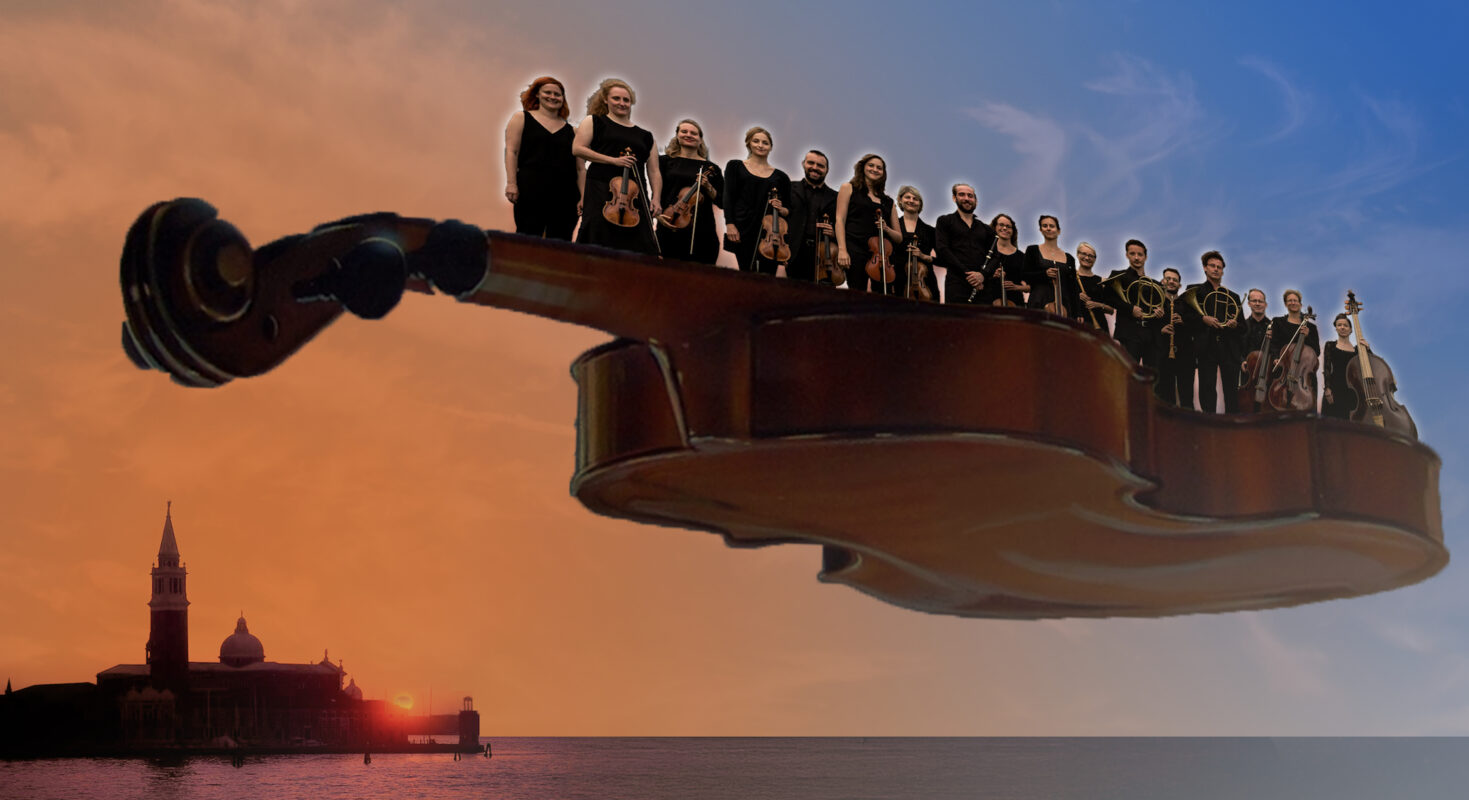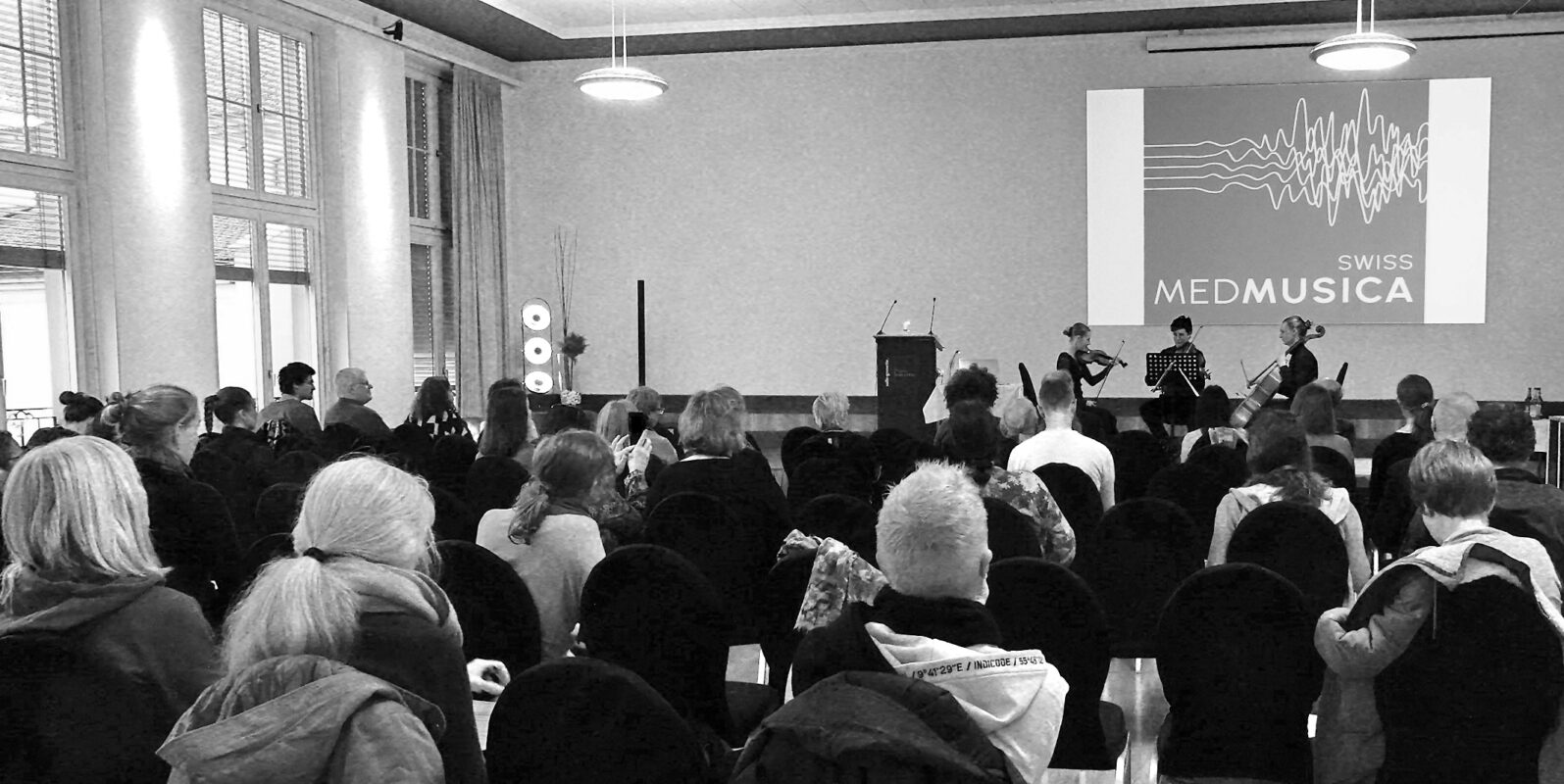Music in times of crisis
With the title "Music in times of crisis: Pandemics", a new volume of the Swiss Yearbook of Musicology has been published. 16 diverse articles, a new concept and a redesigned layout mark the new chapter in the history of the yearbook.

Helen Gebhart - The various world events of recent years, such as the climate and refugee crises, wars and the Covid-19 pandemic, prompted the four editors to choose music in times of crisis as the main theme of the new issue. At the center of this theme is the thesis that music and crises are in a complex, reciprocal relationship. The call for papers attracted over 40 submissions, not only from Switzerland and Europe, but also from the USA, Nigeria and Hong Kong. Due to this abundance of submitted proposals, the editors Lea Hagmann, Laura Möckli, Vincenzina Ottomano and Margret Scharrer decided to publish three volumes on different sub-themes. The first volume deals with pandemics, while the second and third volumes focus on conflicts and wars as well as creative crises.
Music in times of crisis: Pandemics contains 16 articles in four different languages: German, French, Italian and English. The main articles in the first part of the magazine are not limited to the Covid-19 pandemic, but also deal with other health and social crises such as the AIDS pandemic and the climate crisis. How are musicians in Greece, whose situation had already deteriorated with the financial crisis, dealing with the Covid-19 pandemic? How can live music act as crisis prevention and what is the relationship between sound and environmental pollution, environmental disasters and musicology? These and many more questions are discussed in the articles by Ioannis Tsioulakis, Michael Huber et al. and Lisa Herrmann-Fertig.
Further multifaceted testimonies on pandemics can be read in the articles by Cathrine E. Struse Springer, Lea Hagmann and Sharonne Specker in the "Contemporary Witnesses" section of the yearbook. The poster entitled "Uneven Bulgarian Rhythms Explained by Covid-19 Related Vocabulary" decodes complex Bulgarian rhythms using everyday vocabulary such as "lockdown" or "quarantine" in 2020, while the two different interviews discuss the situation of the Swiss music festival Alpentöne during the pandemic and the creation of the YouTube sing-along project "Einsingen um 9" during the lockdown. The texts in the "Werkstatt-CH" section provide an insight into the latest research relating to Switzerland, such as "EVENTI: un'indagine sulla resilienza delle istituzioni musicali della Svizzera italiana in tempi di pandemia", "Musikkognitive Erkenntnisse zum Jodeln im Appenzell und Toggenburg" and "Die Sweelinck-Tradition im schweizerischen Engadin". Promoting young talent is a major concern of the SJM team. For this reason, contributions by young researchers, such as " 'Brincar Musical' : origines étymologiques et observations sur le terrain au Brésil " by Emma Charlotte Dickson, round off volume 38.
This publication is the result of the intensive work of the four editors and journal manager Helen Gebhart, who have redesigned the yearbook from the ground up. In 2020, they took over the editorship of the yearbook from Luca Zoppelli and Andrea Garavaglia, who had been at the helm of this publication for many years. The researchers, who work in Bern and Venice, all have different areas of expertise in the fields of historical musicology, music theater studies and ethnomusicology, so that this expertise can be used for a diverse yearbook. The multilingual publication is interdisciplinary in nature and includes not only the traditional fields of historical musicology but also applied artistic research, anthropology and systematics. There are also no limits to the form of contribution. In addition to the conventional article formats, it is also possible to publish contributions as posters, in an interview or, in future, as a podcast. The yearbook is now divided into three sections. The "Main articles" section contains longer texts on the respective main topic, while "Contemporary witnesses" contains shorter articles on the topic. The "Werkstatt-CH" section is a showcase for music research in Switzerland, in which shorter articles on current research topics can be published.
Open Access
In order to visually mark the new chapter in the history of the yearbook, the layout, including the cover, has been completely redesigned. The cover is now adorned with a so-called water sound picture by Alexander Lauterwasser. This refers to the editorial vision of the four editors: sounds of all kinds and their after-effects, as depicted in a picture of water, are to be presented in the Swiss Yearbook for Musicology be taken into account. In addition to the new sections and layout, there is also a major change in the type of publication: the Swiss Yearbook for Musicology is no longer published in print by a publisher from volume 38 onwards, but is available on its own publication platform in full open access. This website for the management and publication of journals is provided by Bern Open Publishing of the Bern University Library and is used for the SJM. This publication system offers a number of advantages, first and foremost free access for all interested persons, as well as the possibility of making articles available in various file formats. While the yearbook was previously printed and later available as a digital version, the new SJM can be read online from the outset and can also be ordered via print on demand.








